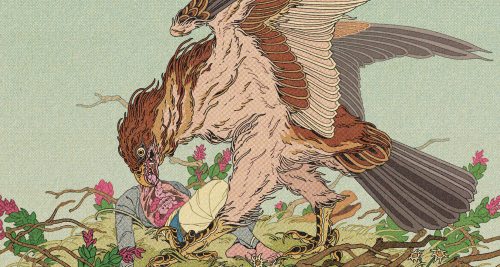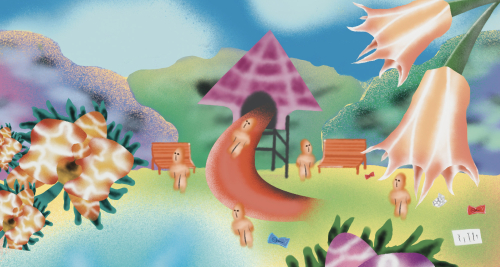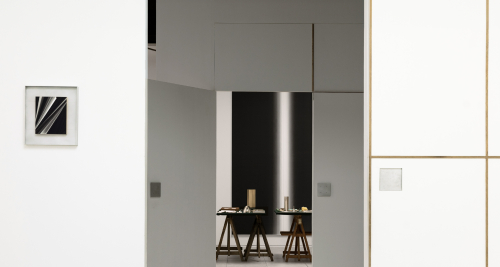Clasutta: From Everyday Portraits to the Global Art Stage
Amidst the increasingly competitive Asian art scene, the name Clasutta—or Sutta, as she’s familiarly known—has steadily emerged as one of Indonesia’s rising contemporary artists. Her trajectory recently reached a new milestone after she officially signed an exclusive contract with Whitestone Gallery, a prestigious institution rooted in Japan with branches in several major Asian art hubs, including Singapore. This move signals a new chapter, not just for Sutta’s career, but also for young Indonesian artists who are beginning to enter the global art circuit in a more structured and sustained way. To mark this achievement, Grafis Masa Kini sat down with Clasutta on a sunny afternoon to talk about her journey and her growing presence on the global art stage.
Whitestone Gallery itself is hardly a new name in the global art landscape. Established in Tokyo in 1967, the gallery has long been recognized as a pioneer in introducing Japanese artists to the international scene. Over the decades, Whitestone expanded its reach to Karuizawa, Hong Kong, Taipei, and Singapore, fostering a broader spectrum of contemporary East Asian art practices. With a solid reputation and a well-established network of international collectors, a contract with Whitestone is a significant accomplishment by any standard—made even more remarkable by the fact that Sutta is the first Indonesian artist to join its roster.
Of course, this achievement didn’t happen overnight. Before fully dedicating herself to art, Sutta built her academic and early professional background in architecture. While architecture provided her with a sharp sense of spatial awareness, proportion, and visual composition, over time, she realized that something was missing. “I spent years in architecture, but over time, I realized I was looking for something deeper or different. When I discovered fine art, it felt like I finally found what I had been searching for,” she explained with the kind of enthusiasm that seems to define her approach to life and art.

That search for purpose led her to AMP—Atreyu Moniaga Project, an artist incubation program based in Jakarta. As both a participant and project leader in AMP Batch #12 in 2024, Sutta gained an important platform to present her work more seriously to the public. After completing the program, through her debut exhibition with AMP x D Gallerie, she decided to focus on pursuing a career in the arts.
What distinguishes Sutta’s works is her ability to transform the bitterness of everyday life into vibrant, satirical visual narratives. Using oil on canvas as her primary medium, her paintings feature playful characters that humorously reflect the absurdity of modern life—especially the anxieties often felt by today’s urban generation. Her works explore themes like work, family expectations, the search for meaning, and society’s obsession with appearance. One of her recent pieces, exhibited in the Mango Art Festival, Bangkok, touched on beauty standards and plastic surgery culture.
Whitestone Gallery’s interest in Sutta’s work began with an unexpected encounter at Art Jakarta 2024 with one of the gallery managers, Priscilla Quek. That moment opened the door to an invitation to exhibit at Art SG 2025. “Everything happened quite spontaneously. I was invited to showcase my work in Singapore, and the response was overwhelmingly positive. Not long after, they offered me a contract since I didn’t have a gallery representative yet—and I said yes right away, it just felt like we found each other!” she recalled.
Being represented by an international gallery like Whitestone has encouraged her to maintain a more intense and consistent creative rhythm. A busier schedule has brought more structure to her creative process, though she admits it can be nerve-wracking. “Honestly, it’s pretty nerve-wracking. It feels like I’m dreaming,” she laughed. Even so, working with Whitestone opens up significant opportunities: clear programming, logistical support, and the possibility of a solo exhibition in the future. The long-term contract has also opened the door for Sutta to pursue some of her bigger ambitions.

Despite this breakthrough moment, Sutta understands that the art world is about more than just ideals and creativity. Market dynamics, public expectations, and production demands all play a role in the life of a working artist. Even so, she remains committed to the original concept that has driven her artistic practice: telling everyday stories that people can relate to. For her, personal encounters often spark new ideas. “The most exciting part is always meeting and talking to people—it gives me new stories to tell,” she added.
Though still early in her artistic career, Sutta’s work has already shown significant transformation. She notes that after participating in AMP, her artistic identity has grown stronger, her narratives resonate more deeply with audiences, and her technical skills have evolved in meaningful ways. From her first exhibition to her latest work, she continues to explore the possibilities of oil painting, searching for the most fitting visual language to express her stories.
As the conversation drew to a close, Sutta acknowledged that her journey is just beginning. There are still many dreams to pursue and creative experiments waiting to be realized. But one thing is certain—for Sutta, art is more than just a medium of personal expression. It’s a way to invite others to think, to feel, and—at the very least—to laugh at the absurdity of it all. And with Whitestone Gallery now standing firmly behind her, her path toward the global art scene has only just begun.
















